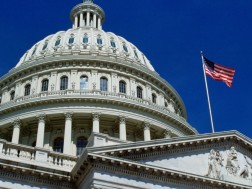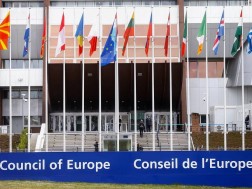16 MLN GEL, 33 apartments, 14 plots of land, 21 cars and 6 weapons – W...

To prevent illicit enrichment, public officials are obligated to
declare any gift received by them or their family members in their
asset declarations, if the value exceeds 500 GEL. They are prohibited
from accepting any gift that may influence the performance of their
official duties or exceeds 5% of their annual salary.The restrictions
do not apply to gifts received by public officials from family members
or close relatives. While this exception may seem logical, it also
poses a risk: in the absence of proper oversight, it can become a
loophole in the law, which dishonest officials may exploit to
“launder” income obtained illegally, in other words, to declare
income received in violation of the law as a gift from a family member
or close relative.Therefore, it is crucial that in every case where a
public official declares a large gift, whether it be a significant
amount of money, high-value items, or service, the Anti-Corruption
Bureau should investigate whether there may be an attempt to legalize
illicit income.In 2024, around 6,000 public officials submitted asset
declarations. These declarations cover gifts received during 2023, and
the data reveals that 308 officials received gifts totaling 22 million
GEL in value during that year.Public officials most often receive
gifts in the form of cash. In 2023, 303 individuals received a total
of up to 16 million GEL, averaging about 53,000 GEL per person.
However, the amounts of cash gifts vary, and among them, 55 officials
received more than 100,000 GEL each. Additionally, officials declared
47 units of real estate as gifts, of which 33 are residential houses
and 14 are land plots. The gifts also included 21 vehicles and 6
firearms.In cases of cash gifts, the money is often received in US
dollars or Euros. In 2023, officials received up to 6 million USD and
347,000 EUR.By total value, 72% of the gifts (16 million GEL) were
received from parents. Up to 2 million GEL worth of money or items
were received from relatives. In total, 1.6 million GEL was gifted by
brothers or sisters, and 1.1 million GEL by children.In 2023,
officials from about 90 different institutions received gifts.
Employees of the Prosecutor’s Office of Georgia received the largest
total value of gifts - 46 employees received gifts worth a total of
4.5 million GEL. Next are members of Parliament, who received gifts
totaling 2.4 million GEL, followed by employees of the Ministry of
Internal Affairs with gifts worth up to 2 million GEL, and judges who
received gifts valued at 1.3 million GEL.In 2023, among high-ranking
officials, substantial gifts were received by former Prime Minister
Irakli Garibashvili - 150,000 GEL; Minister of Justice Rati Bregadze -
100,000 dollars (an apartment); Deputy Minister of Justice Buba
Lomuashvili - 160,000 GEL; Chairman of the Tbilisi City Assembly
Giorgi Tkemaladze - 60,000 dollars; and Supreme Court Judge Giorgi
Mikautadze - 50,000 dollars. All of them received gifts from family
members.10 officials who received the highest value of gifts according
to the 2024 declarations:Giorgi Shapatava(Prosecutor at the
Prosecutor’s Office of Georgia, Department for Investigation Process
Management in the Ministry of Defense)Giorgi Shafatava received gifts
totaling 1,012,000 USD (equivalent to 2,661,600 GEL based on the 2023
average exchange rate). He received 870,000 USD from his father and
142,000 USD from his sister. The declaration states that the gift from
his father was obtained through the sale of real estate.Irakli
Kirtskhalia(Member of the Parliament of Georgia)In 2023, Irakli
Kirtskhalia received real estate worth 250,000 USD as a gift from his
father. He also received 185,900 USD and 137,000 GEL in cash from his
father. Additionally, he received 1,714 USD in cash from his sister.
Based on the 2023 average exchange rate, Irakli Kirtskhalia received
gifts with a total value of 1.3 million GEL.Vakhtang Baakashvili(First
Deputy Head of the LEPL "Youth Agency")Vakhtang Baakashvili’s
spouse, Tinatin Megrelishvili, received an apartment as a gift from
her father valued at 295,000 USD, which is equivalent to 775,800 GEL
based on the 2023 average exchange rate.Khatuna Totladze(Deputy
Minister, Ministry of Foreign Affairs)Khatuna Totladze received
250,000 USD from her mother, which is equivalent to 657,500 GEL based
on the 2023 average exchange rate.Davit Tsereteli(Judge, Tbilisi City
Court)In 2023, Davit Tsereteli received an apartment valued at 156,000
USD as a gift from his mother, which is equivalent to 410,000 GEL
based on the 2023 average exchange rate.Levan Gamkrelidze(Director of
the LEPL "Road Transport Agency," Ministry of Economy and Sustainable
Development)Levan Gamkrelidze received 150,000 USD in cash as a gift
from his mother, which is equivalent to 395,000 GEL based on the 2023
average exchange rate. The declaration states that the gift from his
mother was obtained through the sale of a plot of land.Zurab
Pataridze(Ambassador to the Republic of Azerbaijan, Ministry of
Foreign Affairs)Zurab Pataridze received 75,000 USD in cash from his
spouse’s mother and 65,000 USD from his mother. The declaration
states that both amounts were obtained through the sale of real
estate. Based on the 2023 average exchange rate, Zurab Pataridze
received gifts with a total value of 368,000 GEL.Sandro
Tsabutashvili(Head of the Main Department for Border Management and
Coordination, Ministry of Internal Affairs)Sandro Tsabutashvili
received 142,500 GEL and 17,640 USD in cash from his sister. He also
received 70,000 GEL from his father-in-law, noted as a wedding gift.
His spouse, Elene Jikhvashvili, received 63,000 GEL, 10,100 Euros, and
1,200 USD in cash from her father. Based on the 2023 average exchange
rate, Sandro Tsabutashvili and his spouse received gifts with a total
value of 353,000 GEL.Vepkhia Lomidze(Judge, Tbilisi Court of
Appeals)Vepkhia Lomidze received a cellar (commercial space) valued at
300,000 GEL as a gift from his spouse, Nino Jinjharadze.David
Zilpimiani(Former Member of the Parliament of Georgia)David Zilimiani
received 105,000 USD in cash as a gift from his grandchild, which is
equivalent to 276,000 GEL based on the 2023 average exchange rate.


















